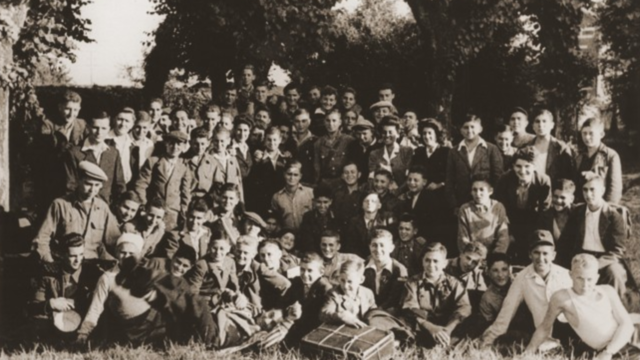
What is now commonly referred to as the Person-Centered Care approach to health care has been closely associated with long-term care for the aged. It’s become integral in replacing the prevalent institutional approach to nursing homes, and is intertwined with altering ageist attitudes about growing old in general.
While this is all well and good, I’ve always believed two things: one is that the dehumanizing nature of the institutional nursing home is a reflection of a particularly pernicious form of ageism. Even though ageist attitudes affect all elders, the vast majority are not in long-term care settings. Secondly, that person-centered care, culture change, psycho/social wholistic model, regenerative model, or whatever vernacular or iteration one favors, should be for people of all ages, not just elders in a long-term care setting.
In the book “Einstein and the Rabbi”, written by Naomi Levy, a woman rabbi in the Jewish Spiritual Renewal Movement, poignant stories are told. All were powerful, but one in particular stood out to me.
When the concentration camps were liberated there were a few hundred boys, from seven years of age to teenage, that managed to survive the horrors of the camps. They were in very bad shape.
These boys were placed in orphanages in France and Switzerland. In one orphanage where one hundred boys were placed, the professional staff were expecting grateful and well mannered boys. They were shocked and overwhelmed at their behaviors. The boys were exploding with rage, they were paranoid of everyone, especially the doctors; they were uncommunicative, violent and obsessively stole and hoarded food. All had shaved heads with emaciated faces. The Hungarian and Polish boys were incessantly fighting each other. Seemingly incapable of laughter or play the experts diagnosis was dire: “damaged beyond repair.”
Not surprisingly there was enormous staff turnover. After the latest director left the orphanage in utter frustration the orphanage turned to a twenty two year old woman, whose parents were holocaust victims . Judith Feist, suffering from her own experiences and plagued with insomnia was studying to be a social worker and saw this as an opportunity. She was looking for her own salvation and had the audacity and courage to take this on. Other staff viewed her as naive and about to learn a painful lesson.
Judith understood that earning the boys trust was paramount. She learned every boys name and she studied Yiddish, the common language of the boys. She had the discipline to listen and penetrate beyond the rage. With that she installed her first systems change to eliminate the incessant stealing and hoarding. The kitchen was now open twenty fours a day and the boys could come eat and take food as they desired. That change achieved its desired outcome and the stealing ceased. The kitchen became a gathering place for some to congregate.
Her next daunting move was to halt the fighting. The boys were getting beat up and injured. Up to this point they were grouped together in rooms by age. With a stroke of common sense brilliance, Judith set a new rule. They would group themselves in their bedrooms based on their hometowns, regardless of age difference. The boys were now living with other boys from their own villages. Interestingly, under this grouping the older boys began to look after the younger ones. The fighting began to diminish and soon ceased altogether.
Next Judith had the boys take on chores, especially to help prepare for the Sabbath, as that reminded them of pleasant memories of their past. As they started to fill out and grow back their hair, Judith retained a professional photographer to take their portrait pictures. They dressed up with newly donated clothes and this became a joyful event. This was huge as these boys seldom had the experience of even gazing at themselves in a mirror. A sense of worthiness grew in what was one once a barren and vacuous stunted self image.
Through empathy, lack of attachment to how things were supposed to be run, and a prodigious dose of common sense and person-centeredness these boys lives were saved. The boys after a few years were placed in homes in the US, Israel, France, among a few other countries. Virtually all were successful. For example many became rabbis, doctors, lawyers, authors, artists, scientists, and had families of their own. The most famous of them all was Elie Wiesel, the great author, speaker and humanitarian.
As I was reading this account I could not help but notice parallels to the Culture Change movement going on in long-term care settings. Person -Centered Care is for all ages, though its ascendancy came in the nursing home sector. It’s a matter of open minded insights through empathetic comprehension, servant leadership, and believing in the human spirit no matter how obscure it might be.
Featured Photo Courtesy of the United States Holocaust Memorial Museum Website
Eliminate theft by giving it away.
Minimize fighting by segregation.
Instill pride by recognizing the individual.
The steps seem so simple yet regretfully so difficult without respect and love.
Two virtues in shorter supply than one thinks.
compassion purifies the soul !! A great story !
It’s what you have done in your beautiful life